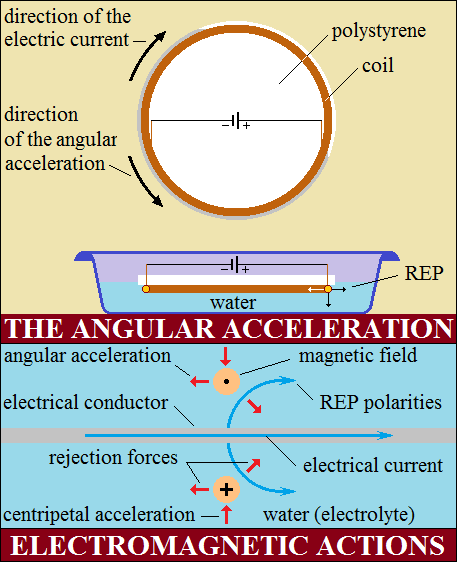The
epsilon experiment
The properties of the vectors generate two essential phenomena in the
organization of the universe: centripetal acceleration and angular acceleration.
Vector properties can not be separated.
The property of orthogonality is "electromagnetism" (EM).
So, electromagnetism produces two similar phenomena,
centripetal acceleration and angular acceleration.
Similarly, because both are electromagnetic forces,
they have in common the orientation of magnetism and specific electricity.
The centripetal acceleration (gravity) is produced by an electromagnet
and generates in substance, the radial electric potential (REP).
The REP polarities, perpendicular to the magnetism and
current of the electromagnet (Hall effect), produce angular acceleration.
Angular acceleration
Angular acceleration could be demonstrated experimentally.
This experiment is accessible by the fact that angular acceleration
is the same electromagnetic force that produces the propagation of electricity.
The actions that orient the polarities in the electric conductor (propagation)
are the electromagnetic forces of rejection between polarities and magnetism
Experimental device
The experimental device consists of a coil 500-1000 mm in diameter,
fixed on a polystyrene plate and a DC source.
The device is placed on salted water and the polystyrene
floats with the coil immersed in water (electrolyte).
In water, the radial electric potential can be detected.
The sense of the current through the coil must cause the device to rotate
in the opposite direction.
It can be attached to a polystyrene concentric bobbin, a Sagnac gyroscope.

